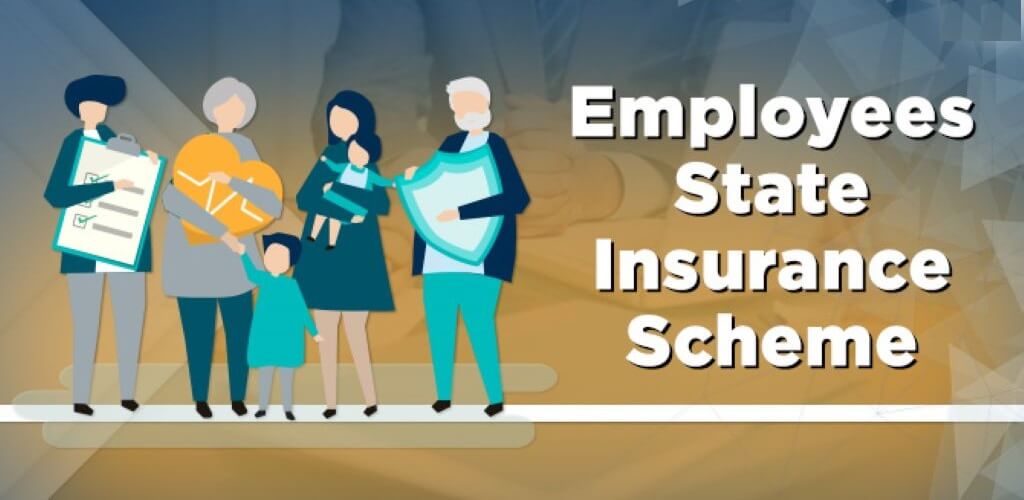In today’s sedentary lifestyle, one cannot help but resort to some form of medication daily for a healthy existence. However, with the skyrocketing medical costs, maintaining a healthy life becomes a savings-draining task for some people, such as factory workers, construction labourers, widowed mothers, and so on.
Keeping the requirements of such people, the Indian government has launched the ESI (Employee State Insurance) scheme to help them in case of medical emergencies.
In this post, we will discuss the scheme in detail!
What Is ESI (Employee State Insurance) Scheme?
ESI is a multi-dimensional social security plan that was specifically designed to offer socio-economic security to employees in the organized sector. The scheme is an integrated form of social insurance incorporated in the Employees’ State Insurance Act of 1948.
The act’s main goal was to provide salaried workers and their families with financial security in the event of unforeseen medical problems, temporary or permanent disability, maternity, or death. The financial aid offered by the program can also make up for the employees’ lost wages as a result of their medical issues. The program is self-financing, with regular monthly contributions from both employees and employers equal to a fixed proportion of their salaries.
Who Is Eligible For ESI Scheme?
One must fulfill certain requirements established by the scheme to receive the benefits provided under the ESI Scheme. Those who qualify for the scheme are as follows:
- Must be employed in a non-seasonal factory with more than 10 staff members. The ESI Act’s Section 2(12) applies to this eligibility requirement.
- Must have a monthly salary cap of Rs. 21,000 as of January 1, 2017.
It also lays out the standards for a family member to qualify as the insured person’s dependent under the ESI scheme. The act specifies the following as qualifying dependents:
- Any parent, including a mother who is widowed.
- Children, whether biological, adoptive, or illegitimate.
- A sister who is widowed or alone.
- A younger sibling.
- A paternal grandparent, if his or her parents are deceased.
- A daughter-in-law who is widowed.
- A minor kid of a deceased son or deceased daughter, provided that neither of the child’s parents is still living in the latter situation.
Coverage Of The ESI Scheme
In 1952, the ESI Scheme was initially only put into effect in the two industrial hubs of Kanpur and Delhi. Since then, there has been no turning back in terms of its demographic and geographic distribution.
In order to keep up with the industrialization process, the scheme is currently being implemented in approximately 830 centers across 31 states and union territories. The act presently covers more than 7.23 lakh factories and businesses nationwide, providing coverage for over 2.03 crore insured individuals and family units. The total number of beneficiaries currently exceeds 7.89 crores.
Infrastructure Of ESI
The infrastructure of the scheme has continued to grow since its foundation in 1952 to satisfy the social security needs of a constantly growing workforce. For inpatient services, ESI corporation has so far built 42 hospital annexes and 151 hospitals. A network of roughly 1017 panel clinics, 1418 ESI dispensaries, and 140 AYUSH units offers primary and outpatient medical care.
The corporation has also set up five Occupational Disease Centers, one each at Mumbai (Maharashtra), New Delhi, Kolkata (W.B.), Chennai (T.N.), and Indore (M.P.) for early detection and treatment of occupational diseases prevalent amongst workers employed in hazardous industries.
For payment of cash benefits, the corporation operates through a network of over 627 branch offices and 185 pay offices, whose functioning is supervised by 61 regional/sub-regional and divisional offices.
Salient Features Of The ESI Scheme
Here are some of the main features of this government-sponsored insurance program in case you’re keen to learn more about them.
- All employees receiving a salary of less than or equal to Rs. 21,000 per month are intended to be covered by the Employee State Insurance Scheme.
- It includes medical facilities for the insured person and his or her dependent family members starting on the first day of coverage.
- There are also two contribution periods (1st April-30th September, 1st October-31st March) and two cash benefit periods (1st January-31st June, 1st July-31st December) outlined in the Employees State Insurance Act of 1948.
- Even if an insured person chooses to retire early or is enrolled in the VHS plan, the plan will still provide benefits to them.
- When experiencing issues related to pregnancy, female employees are eligible for additional perks. Without compromising their pay slab, they are permitted to extend their 26-week maternity leave by a maximum of one month.
What Are The Benefits Offered By ESI Scheme?
One can avail of the following benefits once they are enrolled under the ESI scheme:
- Sickness Benefit: The insured person receives the Sickness Benefit at a rate of 70% of their average daily salary for up to 91 days over two successive benefit periods.
Under the Enhanced Sickness Benefit, 100% of the average daily earnings is paid for 14 days for tubectomy and 7 days for vasectomy, which may be extended on medical advice. On the other hand, the Extended Sickness Benefit is payable for 124 days over the course of two years at a rate equal to 80% of the average daily income, and it may be extended for an additional two years with a doctor’s approval.
- Disablement Benefit: According to the Disablement Benefit, the insured individual who suffers a work injury and becomes disabled is compensated for as long as their temporary disability lasts at 90% of their average daily salary. In the case of permanent or total disablement, 90% of the average daily income is paid for life. Additionally, in the case of permanent partial disability, the insured person is compensated proportionately for the loss of earning capability as decided by the medical board.
- Dependents’ Benefit: If the insured person passes away as a result of an occupational accident, dependents’ benefits are provided at a rate of 90% of the average daily wage, distributable among all dependents in a specified proportion. Subject to certain restrictions, this is payable to the widow for the rest of her natural life or until she marries again, as well as to the dependent parents and children up to the age of 25.
- Maternity Benefit: In cases of confinement, the Maternity Benefit is paid at a rate of 100% of the average daily pay for up to 12 weeks; in cases of miscarriage, it is paid for up to 6 weeks. On a doctor’s recommendation, this can be prolonged by one month in cases of pregnancy-related illness, confinement, and miscarriage.
- Medical Benefit: One of the most important benefits provided by ESIC is the Medical Benefit, which offers reasonable medical care (ranging from primary OPD services, in-patient secondary services, and Super Specialty Services) for oneself and one’s family starting on the first day of employment with an insurable employer and continuing for as long as the insured person is employed with an insurable employer. ESIC frequently pays hospitals directly, removing any financial burden from the patient or his family.
- Retirement Benefit: After being an insured person for at least five years, an insured person who leaves the insurable employment upon reaching the age of superannuation, retires under a voluntary retirement program, or takes premature retirement is eligible to receive medical benefits for both himself and his spouse. If the insured person passes away, his or her spouse is entitled to the medical benefit for the time still covered by the contribution. Also, an insured person who stops working owing to a permanent disability brought on by a workplace injury for both himself and his spouse is eligible for this medical benefit.
- Other Benefits: The scheme also offers various other benefits, as discussed below:
- Confinement Expenses: Confinement costs for an insured woman or an insured person for his wife are covered up to Rs. 5000 in the event that the confinement takes place somewhere where the ESI scheme’s required medical facilities are unavailable.
- Funeral Expenses: If the individual is a dependent family member, he may be eligible to receive up to Rs. 10000 to carry out the deceased person’s last rites.
- Vocational Training: If a work-related injury results in physical disability, the higher of the real amount charged or Rs. 123 per day is paid for the duration of the vocational training.
- Physical Rehabilitation: In case of employment injury, the insured will receive 100% of daily wages.
- Unemployment Allowance (RGSKY: Rajiv Gandhi Shramik Kalyan Yojana): 50% of the average daily wage is provided for a maximum of 12 months during the lifetime in the event of an involuntary loss of employment due to factory closure, retrenchment, or permanent invalidity due to non-employment injury, and the contribution in respect of him has been paid/payable for at least three years prior to the loss of employment.
- Skill Up-Gradation Training: The benefits of this are the same as the “Unemployment Allowance” but for a duration of a maximum of 6 months.
How To Register For ESI Scheme?
For Employers:
In case an individual owns a company and wants to register for the ESI scheme, he/she can follow the below-mentioned steps:
- Pay a visit to the official ESIC portal.
- Click on the blue-coloured “Employer Login” tab and a new page will be displayed on the screen.
- Click on “Sign Up”.
- Now type in the business name, employer’s name, state, area, email address for the username, and phone number.
- To ensure that the factory, facility, or security firm is covered by an exclusive labour contract, manpower provider, or contractor supplying labour categories, tick the appropriate box.
- Now press the ‘Submit’ button and the login information will be sent through email.
- Now log in to the ESIC portal using the username and password that were given, then select “New Employer Registration.”
- Pick a “Type of Unit” from the drop-down menu, and then click “Submit.”
- Completely fill out and submit the “Employer Registration Form 1” with all required supporting documentation.
- The next page will be the “Payment of Advance Contribution,” where you must input the total for the advance contribution for the next six months and select the method of payment.
- You will receive a Registration Letter (C-11) with a 17-digit ESIC registration number after the payment has been completed.
For Employees:
- Go to the official portal of ESIC.
- Press on the blue-colored “Employer Login” tab.
- A new page will be displayed on the screen. Enter the username, password, and captcha code, and then press “Login”.
- A new dashboard will be displayed on the screen with 3 columns namely, “Employer”, “Employee”, and “Monthly Contribution”.
- Close all the panels and then select “Register/Enrol New Employee” from the second column.
- Enter all the essential details as asked by the page and then press “Continue”.
- An Employee Registration Form – 1 will open out. Enter all the details of the employee one by one, click on the check box, and then press “Submit”.
- The registration process is now successfully completed and one can see the details of the employee’s registration on the screen.
Documents Required To Register For ESI Scheme
Keep the following documents close at hand before continuing with the online ESIC registration.
- A certificate of registration or a license issued under the Factory Act or the Shops and Establishments Act.
- For partnership firms, a partnership deed is required, and for private limited companies, a certificate of registration is needed.
- A list of all employees together with information on their monthly salaries.
- All employees’ PAN cards and address documentation are required.
- PAN card of the company.
- List of the company’s partners, shareholders, and directors.
- Registers of employee attendance.
- Annual income details.
- Cancelled bank leaf.
Things To Keep In Mind About ESI Scheme
There are certain things that both employers and employees should know about the ESI scheme. Some of them are as follows:
- After the insured changes employers, the new employer must be informed of the ESI Registration Number. As a result, he or she will be qualified to make use of the same benefits as needed.
- The Pehchan Card or ESI card provided as part of the program acts as a pathway towards social security. Therefore, the cardholder must guard it against loss or damage.
- A lost ESI card must be reported right away to the insured and any dependent family members who are covered by the program at their branch office or pharmacy.
- In order to continue receiving the benefits of the ESI system at a different location, an employee who intends to relocate for work must have Form 105 signed by their current employer.
Frequently Asked Questions
Every employer who qualifies for this act’s benefits must obligately register with the ESIS program.
The benefits of the ESIS program are currently not calculated with overtime taken into account.
No, there is no money that may be withdrawn under the ESI plan. Instead of this, it enables you and your dependents to submit a claim in order to take advantage of the free medical care at hospitals and pharmacies that have been approved by the ESI.
Yes, the deadline is 21 days after the month’s last day.
Every day that the workers’ or employees’ contribution is not paid is subject to a 12% annual interest charge.
The ESI Act requires that only ESIC hospitals or dispensaries be used for treatment. However, if a medical emergency arises and you receive care from a private hospital, you may submit a claim to the ESIC, pending ESIC clearance.
Each program beneficiary is given a 17-digit unique ID called an ESI code number.
The employee remains an employee till the end of the contribution period and the contribution is to be taken from and paid on the entire income generated if the wages increase by more than Rs. 21,000 in a month as per the pay limit specified by the center.
The Employees’ State Insurance Corporation (ESIC), a corporate entity with members representing Employers, Employees, the Central Government, State Governments, the Medical Profession, and the Parliament, is responsible for managing the ESI Scheme. The Director General serves as both the Corporation’s CEO and an ex-officio member of the Board of Directors.
Once a factory or establishment is covered by the act, it remains so even if the number of people/coverable employees engaged there at any given moment drops below the necessary limit or the industrial activity changes.
It is done by the employer. An employee must give his or her family’s information to the employer at the time of starting the insurable work, along with a family photo, so the business can register the employee online. An employee must only complete this registration process once during their lifetime. The insurance number generated on the first registration occasion must be used for the duration of the person’s life, regardless of employment or location changes.








